WHEN: Today, Friday, December 9, 2022
WHERE: CNBC’s “Closing Bell”
Following is the unofficial transcript of a CNBC interview with Bank of America Chair & CEO Brian Moynihan on CNBC’s “Closing Bell” (M-F, 3PM-4PM ET) today, Friday, December 9th. Following is a link to video on CNBC.com:
All references must be sourced to CNBC.
SARA EISEN: Bank of America shares down 10% this week underperforming the KBW Bank Index. This comes as a number of financial CEOs commented this week on recession looming in the year ahead. Joining us now is Bank of America CEO Brian Moynihan who is in Washington today for the Council on Competitiveness event which he chairs. Brian, it’s good to have you. Welcome.
BRIAN MOYNIHAN: It’s great to be here, Sara, and it’s great to be talking to you from this important group of people here at the Council on Competitiveness.
EISEN: So on America’s competitiveness, the story has been I would think a strong one because our economy has been in better shape than the rest of the world. Do you see that dynamic continuing to play out into next year?
MOYNIHAN: Yes, we do. And so this group is about how to keep that going for a long term, but then the short term that America is a place to be, you know, we’ve got a economy that’s bigger, it’s more vibrant, the innovation, the capitalism is pure capitalism that lets things, investments get done. And yeah, we’re all facing we predict a slight recession, recession early next year. It’s first, second, third quarter all negative, but on the other hand, we’re going to fare better than most economies in the world and that’s because of the underlying capabilities of this country.
EISEN: What’s the number one issue that worries you the most on our long term competitiveness say with China?
MOYNIHAN: Well, at the end of the day, we’ve got a couple of things. Number one, we got to keep investing in, in research and that’s what we have here. We have the great research labs at great universities, we got to keep investing in the types of things that produced the moonshot, as people say, or the products that came off it. We got to keep investing in that kind of research. And then we got to provide the incentives for that kind of research to be capitalized, and then we got to have the people to build it. And the last piece is one of the things we’re dealing with in this inflationary debate is the long-term impacts of low population growth in the United States across the last couple of years and you hear from the business community often, we need people and I think that’s one of the other issues we got to do to be competitive. So it’s, it’s fund to research, capitalize on research and provide incentives for companies like in the chips act and others to drive that. And then last, make sure that we have the capacity to bring people into this country over and above what we produce naturally to really help this country be what it can be. And by the way, the great thing about America is we share our success when we get it. That’s, we continue to provide funds and capabilities all over the world that help the world be successful.
EISEN: You almost sound like a politician Brian and I bring that up because the White House press secretary actually took a question today, your name came up at a briefing about you as a potential replacement for Janet Yellen. Is that something you’ve been approached about?
MOYNIHAN: I’ve got the best job in the world and I I think that it’s not on my mind and I like what I do and that’s why I’m here doing it today.
EISEN: Would you consider it, ever leaving private sector going to government?
MOYNIHAN: It’s not occurred to me. I gotta run this big company. I’m 29 years at the company doing a great it’s a great company. It’s an honor to run it and I’m going to continue to do it.
EISEN: Alright. So let’s talk about what you’re seeing at the company. You said you expect a slight recession next year. What what gives you the confidence that it will be slight or shallow as as, as you’re talking about and appears most investors expect too?
MOYNIHAN: First of all, it’s our research team and they’re one of the best in the world. And we have a lot of talented people, and they’ve been working this question. And so they have the first three quarters of next year negative. Let’s be clear, 1% or so plus or minus, but not a deep recession. So what gives us confidence in that and it’s really the two way question which is the toughest thing about what the Fed’s job is to slow down inflation is the best thing about America. American consumers are spending more this year than they did last year. In fact, in the first week of December, it picked up a little bit from November to a little higher percentage say 6% versus 5%. But it’s still strong and it’s consistent with a 2% plus growth economy. So that’s, that’s a good thing because that’s what makes America work. Those customers have a lot more money in their accounts. They have, they’re in great shape from a credit perspective. Our industry is also in great shape from a credit perspective. So the withdraw of credit just is not on the table in terms of consumers and households. And so that, you know, that’s what is great about America, lots of consumer spending, maybe not as much on goods this year. You hear your guests say on experiences, trips and travel is up bookings are up strong in our in our customer credit card and debit card base. So that’s what’s good, they’re employed, they’re getting paid, they’re spending. Now that’s what makes bringing down inflation tough because all those things obviously mean that they can pay for things. And so you’re starting to see the beginnings of that flattening out in the inflation question and the question is, how long will it take to get that in control.
EISEN: Yeah, what are your expectations there about how fast and how far inflation falls from here, if it does?
MOYNIHAN: Our expectations are that inflation gets in control really at the end of next year into ’24, it gets more normal levels. So we start to see the GDP growth rates, negative first three quarters then turns positive. We also see the Fed funds rate staying higher, really 4.75 to five all the way through next year. And then as as the impact of all that slows down, the economy slows down inflation, you’d start to see it normalized into ’24. And so this is not, I think that’s one thing that’s been clear that people are really focused on now. This is going to take a little longer than people would like. It’s not gonna be so clear overnight, it’s going to take a bit of time for the higher short-term rates to continue to slow down the economy and bring the inflation under control. So whether the terminal rate is five or five and a half is not as important as holding it there until we’re sure inflation is behind us.
EISEN: One part of the economy though that it is hitting pretty hard is the housing market, which I know you know very well. Last night, Gary Friedman on the RH conference call said housing market is collapsing at a level I haven’t seen since 2008. How bad is it from your vantage point and how much worse can it get?
MOYNIHAN: Well, this is a classic case of if we follow the trend through the great financial the global financial crisis, you know, 6, 7, 8, you saw that house prices shoot up then fall down and then get back on sort of long-term trend. Again from the end of ’19 until now, house prices shot up and now they’re coming down and it’ll probably get back on a long-term trend. But, you know, you got to think of the housing market in two, three different components. Component one is people who have mortgages are locked into, you know, I think it’s 90% under five, 80% under four and 50% under three sort of locked into low rates. And that’s good because that’s, you know, make sure their cashflow is consistent. When you go to the people who want to buy a house, that’s what’s really been impacted. So the builders and the people who are buying houses, obviously the purchase power is much less now but that’s the intended outcome of the Fed policy. Then if you go to the third part which is rent, rent or rent increases, you’re shooting up and now they they tipped over and some cities are bouncing around and so we got to make sure that’s really the part that affects one half of the American households who don’t own their homes so they don’t have a mortgage and they don’t own their homes so therefore we got to be careful those people who can afford the rent and that’s what you got to see tip over ultimately.
EISEN: What are you seeing in the commercial loan book Brian? Commercial real estate?
MOYNIHAN: Commercial loan books are very strong. There’s going to be a long-term trend, a lot of debate about that trend about the occupancy rate of buildings going forward, not the not the vacancy rate. That’s been the traditional focus, but actually, you know, how much space a company like ours needs. So, in 2010, we had 130 million square feet of real estate. Today, we have about 60 million square feet. So even our long-term trend as we trend headcount change the way people work. And now with the work from home, work three days in the office a week, you have an additional opportunity and I think that’s a long-term trend, but it’ll take a while to work through the system. And then the second question for big center cities and we just had this discussion in the city yesterday is how do you convert that, that, that excess office space to housing because there’s housing shortages of major cities around the country still, apartment shortages, and that’s gonna be an interesting thing. So, in New York and in Boston and Chicago and other places are going to convert those buildings to draw people back in the city to live which would be a good thing because in those cities, we’re still short of core housing units. So it’ll work through it’s just we’re seeing our commercial real estate book is in very strong condition. But it’s it’s a long-term question that we’ll have to keep watching.
EISEN: I mentioned the stock price at the beginning of the segment, Brian, your stock has really taken it on the chin this week, worst week I think since since 2020. A lot of investors are reacting to what you and some of the others have said at the at the conferences this week and warning a potentially lower earnings. Did the market get that right?
MOYNIHAN: I’m not sure that’s what we said. We said what we said is our net income is back up which last year was about eleven and a half billion dollars. We’ll be we’ll be about 14.8 or 14.9 billion dollars this quarter this year. So it increased to three and a half billion. But we told people earlier in the quarter when rates were different and the situation was somewhat different than we thought it would grow in a single quarter by 1.2 billion and now we’re saying it’s gonna grow between 900 and a billion so that’s a pretty good growth rate. So I’m not sure I agree with you, the the earnings are not strong. They’re very strong and returns are strong. So we feel good about that. But that’s that’s what caused people to be concerned about what the future prospect going into a recession what the earnings are.
EISEN: What’s happening with hiring and layoffs inside the bank and out?
MOYNIHAN: Well, we had a management team for a long time that’s managed to count carefully. And so, you know, when I became CEO almost 13 years ago now, we had up to 290,000 people, we have about 215,000 today. So think of that that’s 13 years we’ve been able to manage headcount. So, in the very near term, what happened this time last year is the attrition rates kicked up and the great resignation all the stuff that you guys talked a lot about, you know, and that then causes to turn on the hiring machine to make up for. What happens is we come into this year, the amount of turnover rate, the churn rate in our company has dropped dramatically. Half as many people left us in the month of October and less in the month of April and it’s getting back to normal. So went from 12% turnover to 6% and 12% in ’19 and 6% in ’20 about 15% in ’21 and now it’s working its way back down during ’22. That means we just slow down the hiring we can manage the headcount back down to where we want but the the hiring management because when people get scared they’re not gonna get their people, they go out and get them. Now on the other hand, we’re investing positions relationship managers, our commercial banking business technology we’ll spend 300 million next, bigger than this year, and things like that. But on the other hand, we like to headcount trim out and you’ll see it flatten out come back down over time, but it won’t take layoffs and things like that. It just takes discipline management.
EISEN: Yeah, I guess what I’m trying to get at is whether there’s there’s a belt tightening going on right now as you prepare for bumpier times ahead in the economy.
MOYNIHAN: All of us, the corporate world is belt tightening just to make sure because if you could wake up every day and people tell you recession’s coming, you’re trying to do the things you can to make sure that you don’t get over lean too far one way or lean too far the other way. So I think I hear from our clients, you know, I hear from our team and how we’re approaching it. We continue to adjust our position as the best corporate world where the opportunity is there you still go and the other areas you’re more cautious. Who wouldn’t be.
EISEN: What about investment banker bonuses? Everyone’s expecting those to be down this year.
MOYNIHAN: You guys have seemed to have a better track on it than I do from other firms. I feel like when the business is down 50% to 60% in revenues, which, which it is will be this quarter across the industry, those teammates do a great job for us so talented teammates know that sometimes things go up and sometimes they come down.
EISEN: How do you read the the inversion of the yield curve? We were talking about it in the last segment and the fact that it continues to get more and more inverted. Does that make you think it’s going to be a bigger, potentially more long-lasting recession? How are you reading the signals from the bond market?
MOYNIHAN: Well, you know, we’ve got lots of experts who can give you treatises on what it all means, but the reality is the Fed is trying to slow down inflation. The tool they have is to raise short term interest rates and they’re doing that. Meanwhile, the world the America is the best place to be. If you have money to put to work and you could put it in US at three Treasury 10-year treasuries at 3.40 or look at the rates available around the world and the strength of dollar, why wouldn’t it come here. So the money is coming here because the safe haven and frankly, the fact we have real yields and the strength of the dollar. And so, if you put that all together, you got to it’s just different. The major difference that we that you all talk about and know is that between prior times when you entered recessionary periods of potential recessionary periods, what you did not have was the massive stimulus that went on in governments around the world around Covid, which was probably more stimulus than in hindsight and it’s unfair to judge it. It’s unfair to judge it in hindsight, but in factual in hindsight, we’ve ended up with a lot more stimulus we needed. So therefore, our customers have a lot more money in their accounts before the pandemic, that’s causing a tougher to get inflation that may be an inversion, which is different, but long term it should work out and get back to normal as a yield curve, but it may take longer than people think and that’s why I think that Chair Powell said last week, and I think that’s what our economists think and this may take us, you know, a year and a half to two years to get rates to really tip over and start coming back down and short and the long end will sit more or less where it is.
EISEN: But are those, aren’t all those consumer savings dwindling as time goes on here and as people spend money and as inflation, they’re paying so much now for for everything including experiences like travel which is costing the most in years.
MOYNIHAN: We saw for the first time in the last months, those those levels of accounts start to come down a bit and so you know, because now your last stimulus was in March of ’21. You’re now 18 months plus away from that. So of course they’re starting to come down. Now the interesting thing is you look cashflow of households, it’s still strong. You have to be more worried about median income and down households and whether the cash flowing and that’s gotten a little less strong but the credit quality those customers, our customers is very strong but they still have multiples in it. By the way, just year over year, the average account balances by the cohorts of different cohorts are up 10%. So it’s not like it’s it’s it’s even the last year it’s grown. So that’s kind of the interesting question. They will spend it down, you’re starting to see it a bit. It’ll just take longer than I think people think.
EISEN: Got it. Brian Moynihan, thank you so much for your time today from the conference.


















